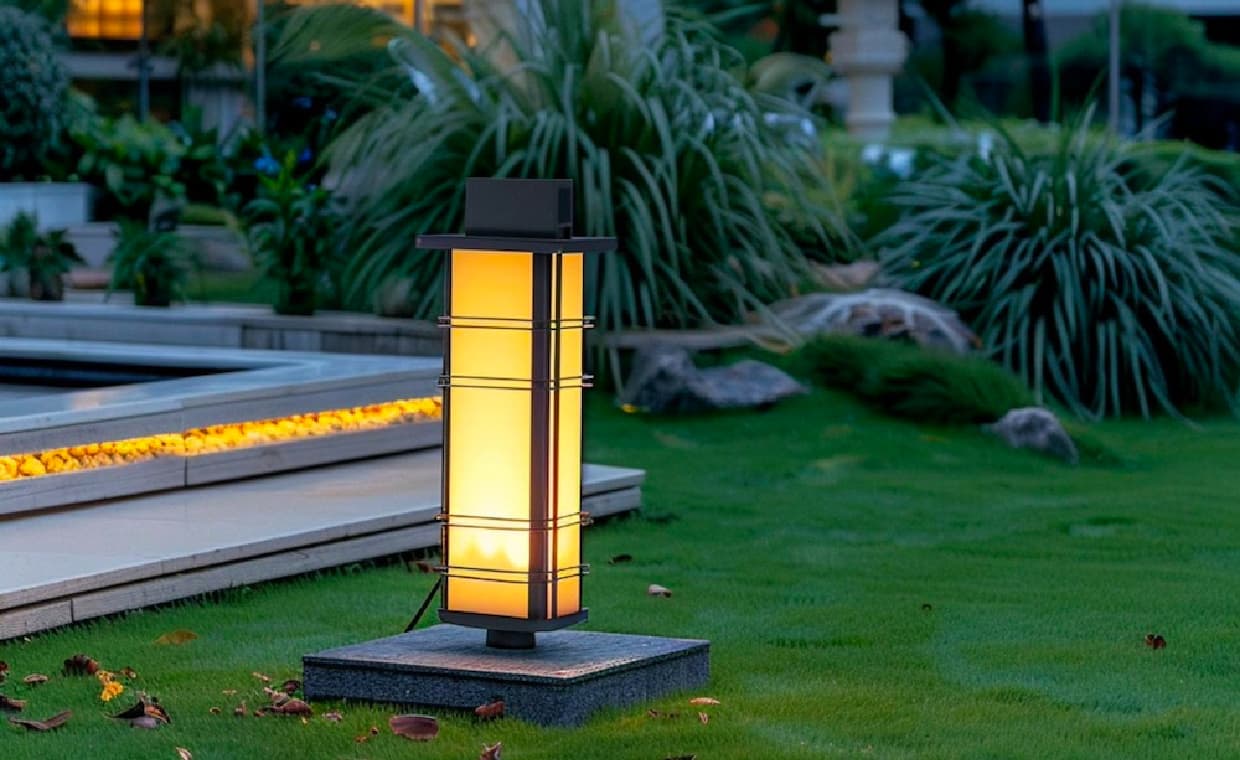
Do you want to transform the exterior look of your home by installing landscape lighting but don’t know how to do it? Then you’ve come to the right place. By the time you finish reading this article, you’ll be able to install outdoor landscape lighting like a pro.
How to Install Landscape Lighting?
The good thing about installing landscape lighting is that you don’t need to be a wiring expert. Like low-voltage (12-volt) DIY landscape lighting installation, it is an easy and risk-free project. Since the wires for these landscape lights remain buried in shallow trenches, they pose little risk of electrical shock.
Landscape Lighting Tools
You will require the following tools to install landscape lighting in your garden:

- Flat-Blade Shovel
- Wire Stripper
- Phillips Screwdriver
- Steel Punch, 12-inch-long
- Small Sledge Hammer
Step-by-Step Guide on How to Install Landscape Lighting
Step 1: Plan and Mark the Location of Landscape Light

First, draw the design, considering the locations of your transformer, cable runs, and fixtures. Secondly, mark any existing cable or irrigation lines to prevent damage during the low-voltage landscape lighting installation.
Step 2: Set Up the Lighting Fixtures

Unpack and put your landscape lighting fixtures together. Then remove everything from the box, install bulbs in lamp-ready fixtures, and connect mounts.
Step 3: Clean and Place Fixture

Clear a path for your wire runs, and position your fixtures as per the project map you created during planning.
Step 4: Mount the Low-Voltage Transformer

Install the low-voltage transformer. When deciding where to put your transformer, there are a few things to consider. Transformers must have 1 foot of clearance in all directions, be placed at least 30 feet away from water features, and be installed on a heat-resistant surface.
Step 5: Install the Electrical Cables for Backyard Light

Dig the trenches for the main wire runs using shovel or spade; however, more specialized tools are available. Although the local code would specify the precise depth of the trench, low-voltage cable is normally buried at least 6 inches below the surface. After digging, place the wires in the trenches and completely cover them with dirt. Leave at least 5 feet of unburied wire at each end for future adjustments.
Step 6: Arrange the Landscape Lighting System

Now, start connecting your system. For a simple and quick connection, use a clamp-connect transformer that clamps to the wires with levers rather than screws.
Begin by connecting your transformer to your main power lines. Connecting one wire strand to the com terminal and the other to a terminal marked 12 or 15 volts. The 12-volt tap is used for shorter wire runs with fewer fixtures, while the 15-volt tap is used for longer runs with more fixtures. Use conduit to protect wires exiting the transformer until they reach the ground.
Step 7: Connect the Fixtures

To connect the fixtures, join the lead wires from each fixture to your main run. Since twist-on connectors are the most widely used method, you can use them. These connections are created by stripping the last half-inch of wire from each end and twisting them clockwise. Insert the connection into the cap, and twist the cap clockwise until the wire spins with the cap.
Clamp-connect junctions are another option. Insert the stripped wire ends into the terminal, push down the lever, and close the box to use. This safeguards the connection against moisture and corrosion.
If you have a group of fixtures, consider using a hub. Hubs make it simple to connect multiple fixtures to a single setting. Hubs can be staked into the ground or buried underground.
Step 8: Examine the System

After completing all of your connections, test your system. Turn on your transformer and walk around your property to ensure every light is turned on. If one is absent, there might be a problem with the connection in your system; therefore, identify the issue and fix the lighting system.
Step 9: Make the Necessary Adjustments

Are all your fixtures functioning properly? If so, begin the process of installation adjustment. If possible, wait until nighttime to do the adjustment; it’ll allow you to see the lighting effects created by every fixture.
Now, walk around your property again, ensuring that each light point is at the desired feature in your landscape. Additionally, be aware of any glare coming from your fixtures. You can reduce the glare by adjusting the fixture’s angle or the position of its glare guard.
Step 10: Cover the Cable and Do Regular Landscape Lighting Maintenance

Complete your project by burying any remaining wires and programming the transformer’s timer. Make sure to periodically inspect the system for loose connections, broken cables, and possibly dirty or misaligned fixtures. Maintaining your landscape lighting system properly will guarantee that it continues to function well.
Conclusion
Now that you have learned about garden lighting installation, you can easily install it. Landscape lighting will make your pathways more welcoming and keep your home safe at night.
If you want to read more articles on garden lighting ideas, then refer to the following link:
The Complete Guide to Landscape Lighting on a Budget
How to have the Best Lighting for Your Home Garden?
Image Courtesy: Image 6, Image 8, Image 9, Image 10, Image 11, Image 12
Author Bio
Jennifer Kiminza – Jennifer Kiminza is a content writer and content marketing professional at Hub Spot, an inbound marketing and sales platform that helps companies attract visitors, convert leads, and close customers. Previously, Jennifer worked as a marketing manager for a tech software startup. She graduated with honors from Nairobi University with a dual degree in Business Administration and Creative Writing.






























